


 I recently had the good fortune to be allowed to view an archive of Swimmer Delivery Vehicles documents. It is held by the Historical Diving Society (Check them out! HDS website ) and covered several Cold War SDVs developed for the Special Boat Service (SBS) and Royal Navy Clearance Divers. Among the materiel were photocopies of old magazine articles collected by one of the leading engineers in the field, K.R. Tuson. I came face to face with an evolutionary missing link in the development of SDVs on both sides of the Atlantic. How did the distinctive enclosed two-man PR-77 Phaeton SDV evolve from the tiny T-14 Pegasus underwater scooter? You may not have heard of these craft but they represent critical steps on the road to modern SDVs.
I recently had the good fortune to be allowed to view an archive of Swimmer Delivery Vehicles documents. It is held by the Historical Diving Society (Check them out! HDS website ) and covered several Cold War SDVs developed for the Special Boat Service (SBS) and Royal Navy Clearance Divers. Among the materiel were photocopies of old magazine articles collected by one of the leading engineers in the field, K.R. Tuson. I came face to face with an evolutionary missing link in the development of SDVs on both sides of the Atlantic. How did the distinctive enclosed two-man PR-77 Phaeton SDV evolve from the tiny T-14 Pegasus underwater scooter? You may not have heard of these craft but they represent critical steps on the road to modern SDVs.

French underwater adventurer and inventor Dr. Dmitri Issaievitch Rebikoff was a pioneer in SDV technology during the '50s and '60s. He formed a strong working relationship with famous UDT officer Cdr Francis Douglas Fane and, after he emigrated to America, his craft were enthusiastically adopted by the US Navy UDT and SEALs.

Rebikoff was a talented and interesting character. Born in France to Russian parents, his family fled from the communists; his grandfather who had helped the Tsar build his air force was assassinated by the KGB. During WW2 he was sent to German labor camps. After the war he set about studying at a top university and a few years later, in 1947, invented the Electric Flash. This allowed high-speed cameras, for example photographing a bullet leaving the barrel of a gun. It also enabled underwater photography but there were not the means for scuba divers to carry such bulky devices so he invented an underwater scooter as a photographic platform. This became one of the first SDVs.
The development of Pegasus
The original prototype, called the Torpillo amounted to a cylindrical tube with a propeller and control surfaces at the rear and simple hand-controlled hydroplanes forward. The diver lay on top of it:
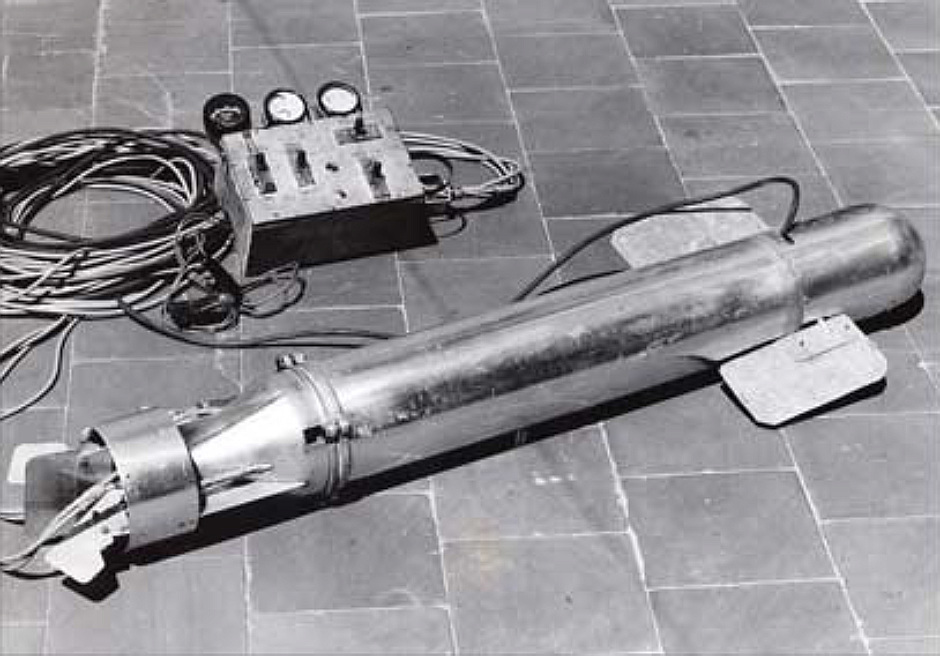
Note that this image shows the Toripllo after modification to the world's first Remotely Operated Vehicle, the 'Poodle'.
The design soon progressed to the larger Pegasus underwater scooter. This was noted for its high quality of engineering and high performance and agility. With large hydroplanes it literally flew underwater.
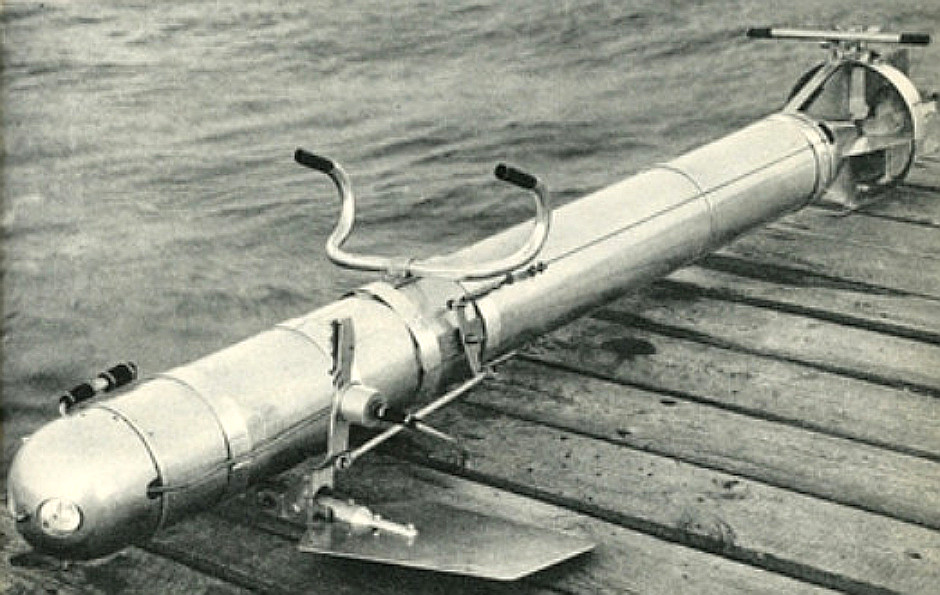
The handlebars are actually to go behind the arms so that it pulls you along
Subsequent versions had instrument panels whichgot successively larger:
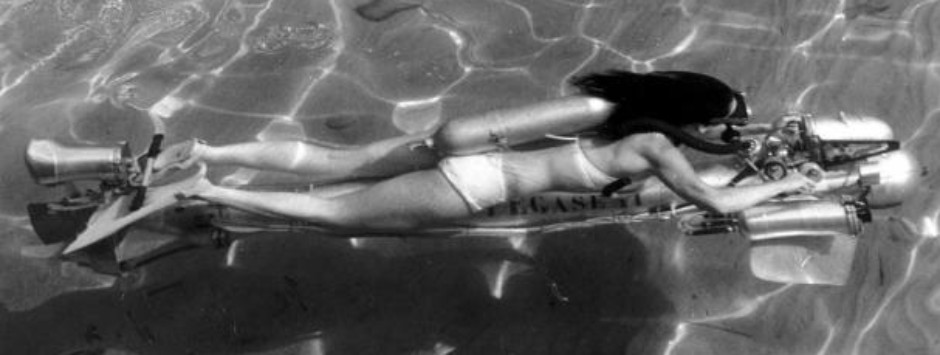
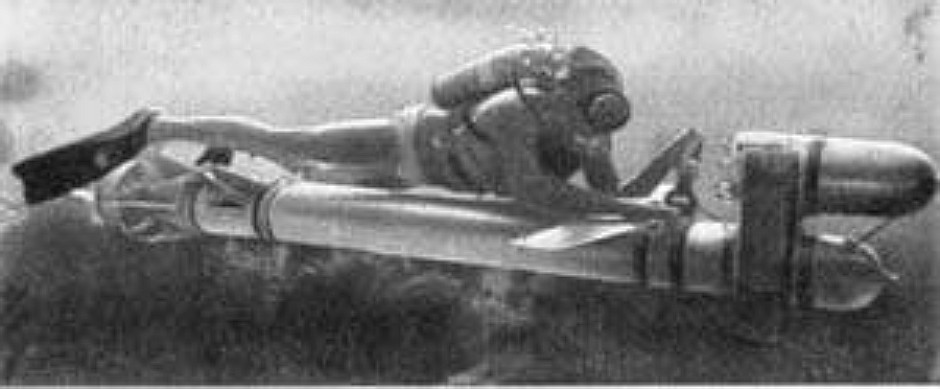
PR-25
Rebikoff sought to offset the perceived shortcomings of the T-14 Pegasus by adding an enclosed fuselage. Inside the streamlined cocoon was a regular T-14. The initial patent illustrations showed a craft with additional air supply.
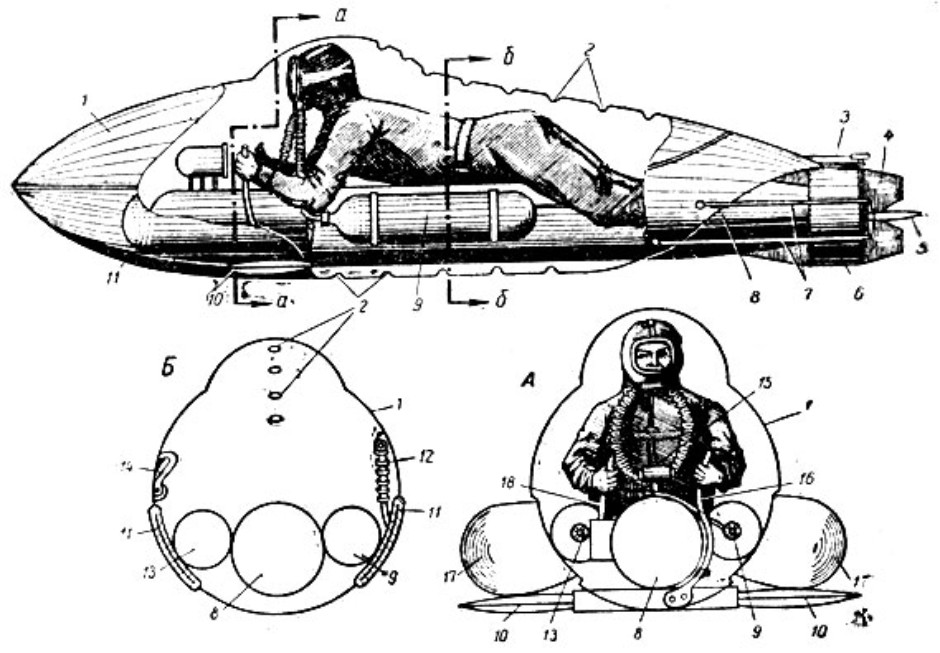
The real thing however, designated PR-25, was much more streamlined appearance. Speed was claimed to be in excess of 7kts and having equal range despite the greater weight.
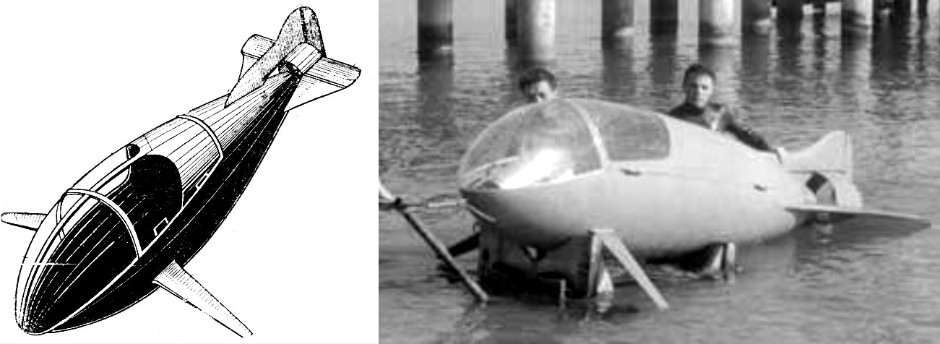
Two-man SDV
Rebikoff's early thinking for a two-man craft was to simply attach two Pegasus' side-by side. Observers at the time wondered who such a craft could be controlled if the two motors turned at different speeds. This 1960s patent shows a modified side-by-side arrangement with only a single propulsor at the back. This represented an evolutionary dead-end, at least for Rebikoff, and none seem to have been built.
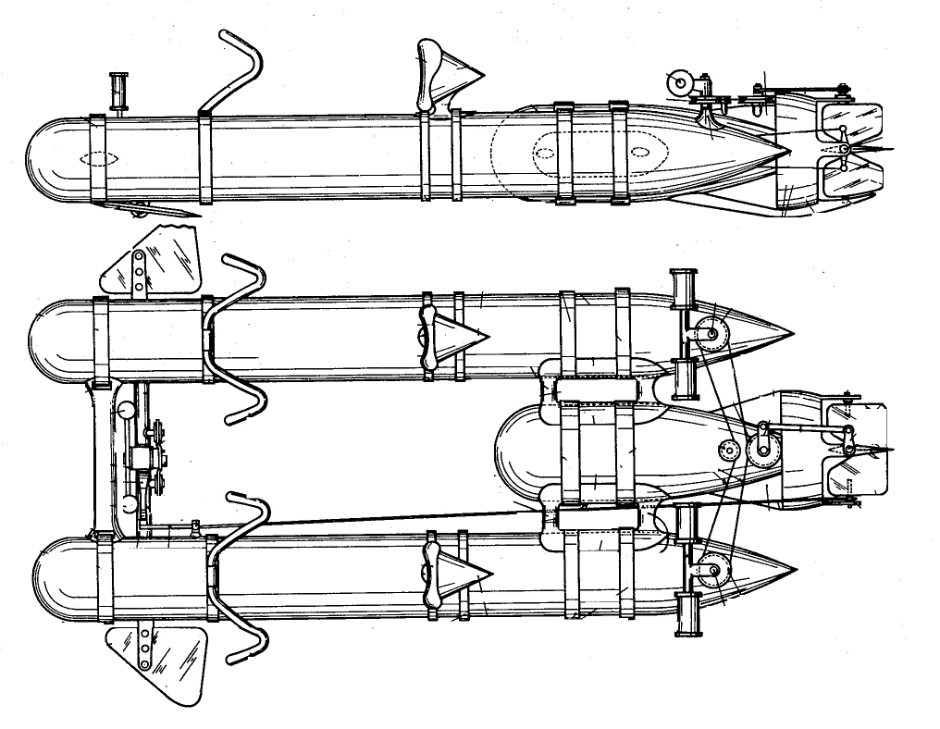
The magazine article I found ('Missiles and Rockets', Jan 1962) shows a Rebikoff design for a two-man side-by-side SDV which is halfway between the PR-25 (above) and the PR-77 (below).
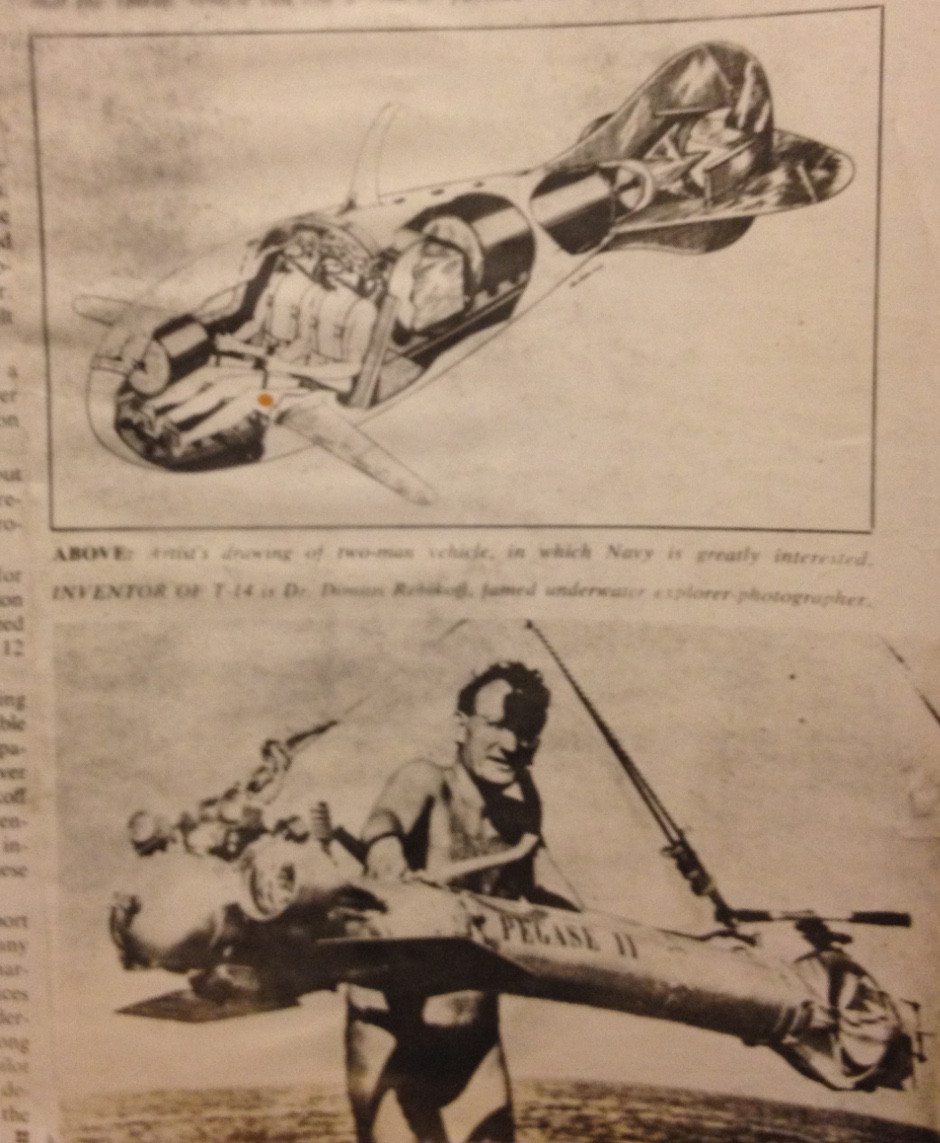
The magazine was in poor shape with water damage but someone has since provided me with a better copy of the same illustration:
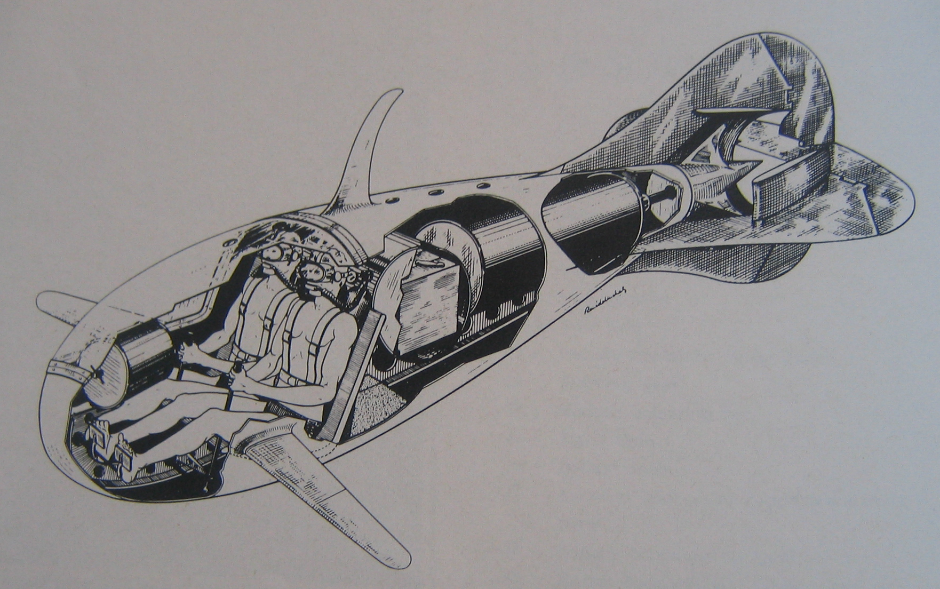
The new type was later marketed as the DR-377 Jonah.
DR-377 Specifications
Length: 3.6 meters (12ft)
Beam: 1.35m meters (4ft)
Displacement: 350kg (770lb)
Speed: 9 kts maximum, 6kts cruising, 1.5kts minimum with control
Operating depth: TBC
Endurance: 10nm at 9kts, 40nm at 6kts and 100nm at 1kt.
Armament: Limpet mines.
Crew: 2
Which places it in the center of the family tree, bridging the gap between the PR-25 and the PR-77:
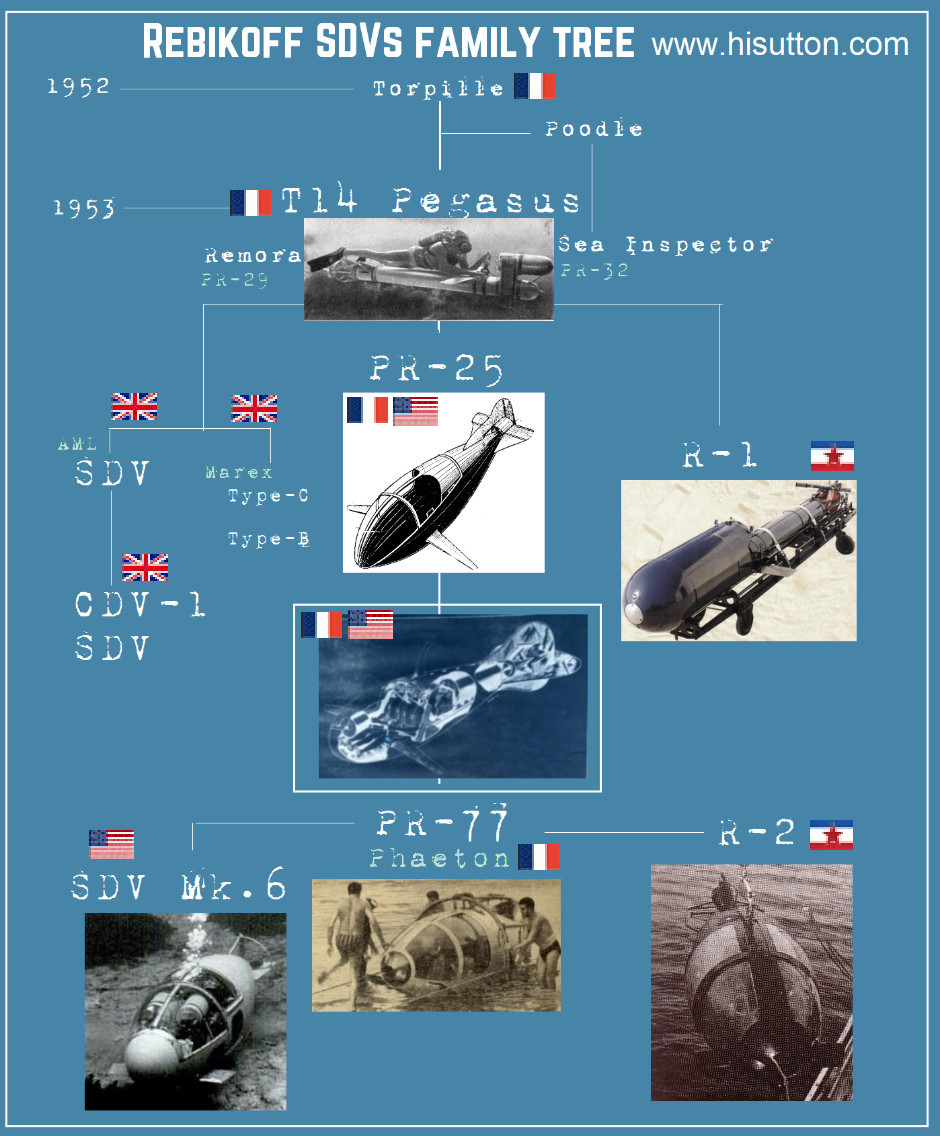
The PR-77, here being tested by the US Navy in the warm waters off Florida. The shark-like fin has gone and the forward hydroplanes are more conventional. The tail section is also redesigned although not visible in this shot.
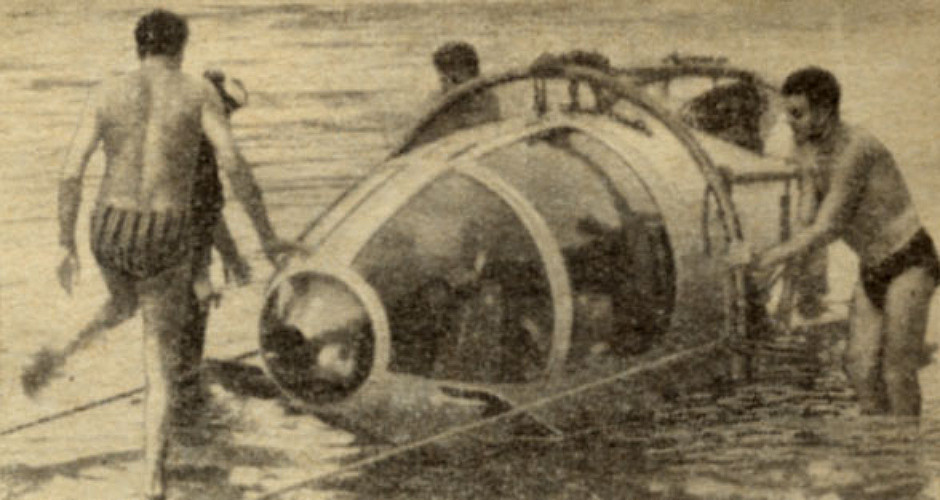
4 seat SDV design
In the mid-70s Rebikoff marketed a four seat version of the PR-77 (by then called the DR-177 Jonah, while the PR-25 was by then the DR-325) as the DR-387 It does not seem to have been built.
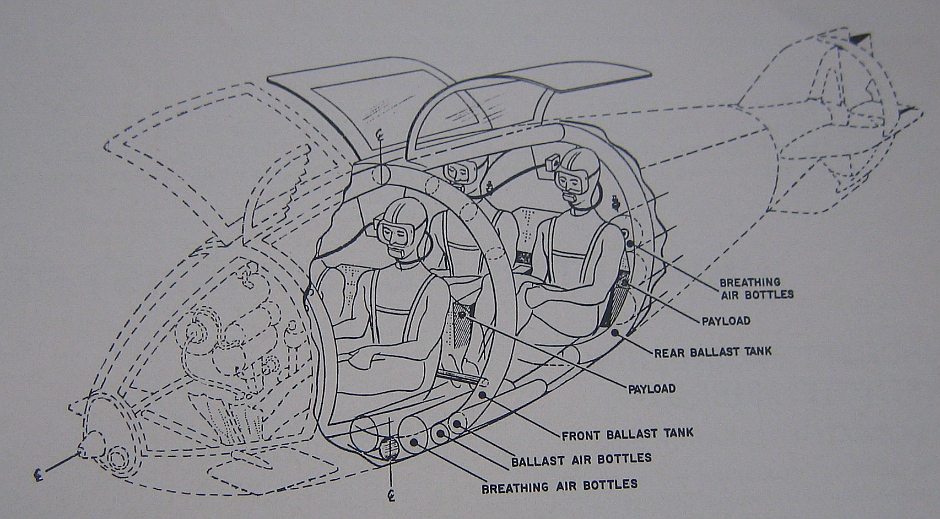
Influence on other countries' SDVs
The Pegasus served as the Loral T-14 in US Navy (UDT and SEAL) service. It also formed the starting point for several British SDVs. Most well known however (although rarely understood in the context of the Pegasus) is the Yugoslav R1 scooter which added a storage bin to the nose and other refinements for military application. This craft was well liked by its operators.
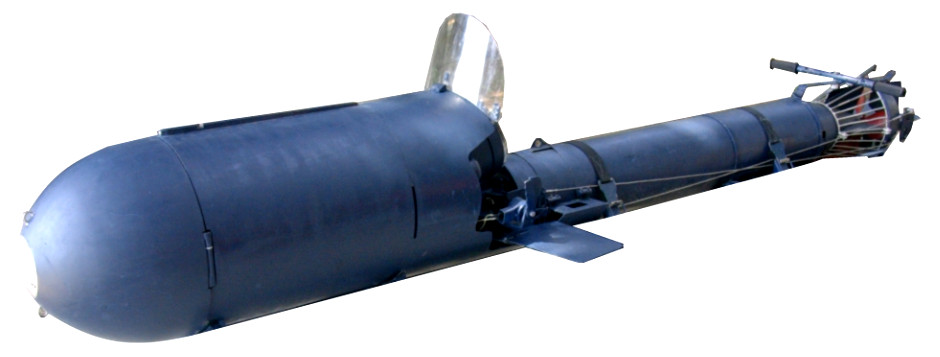
Similarly the PR-77 became the Yugoslav R2 SDV:
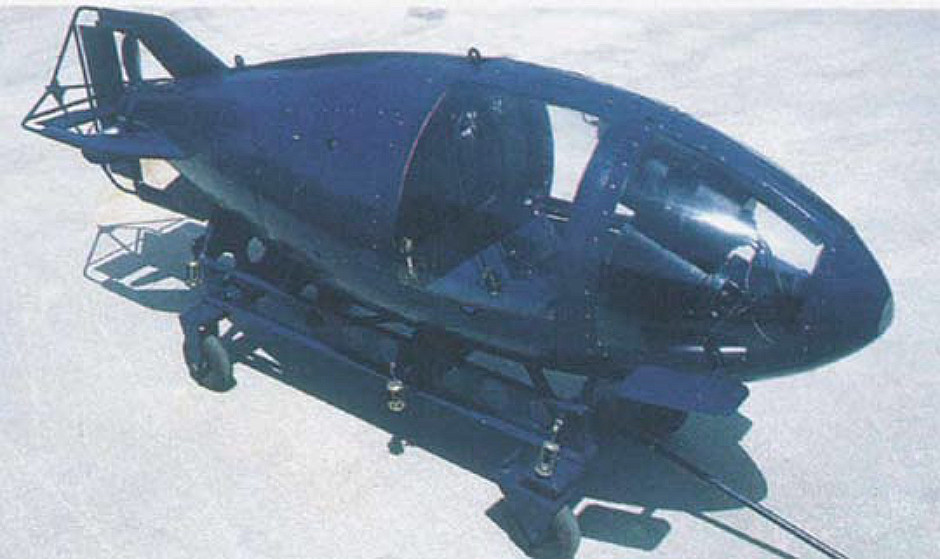
And also the US Navy's experimental SDV Mk.6. Here is a heavily modified example:
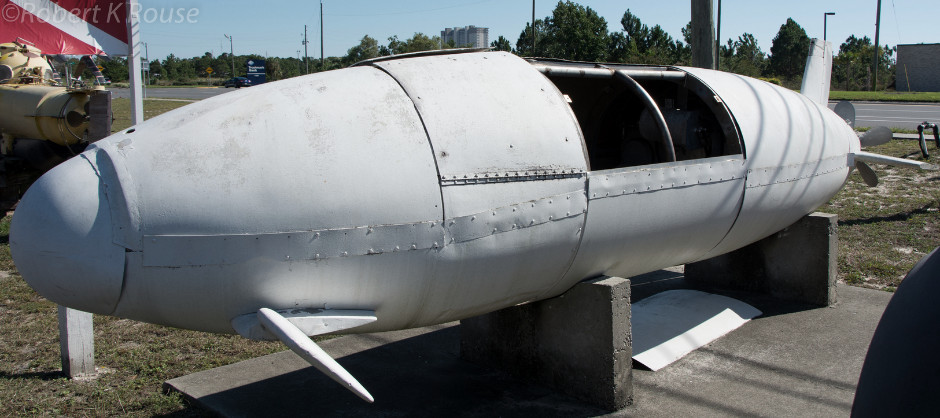
copyright Paul K Rouse.
